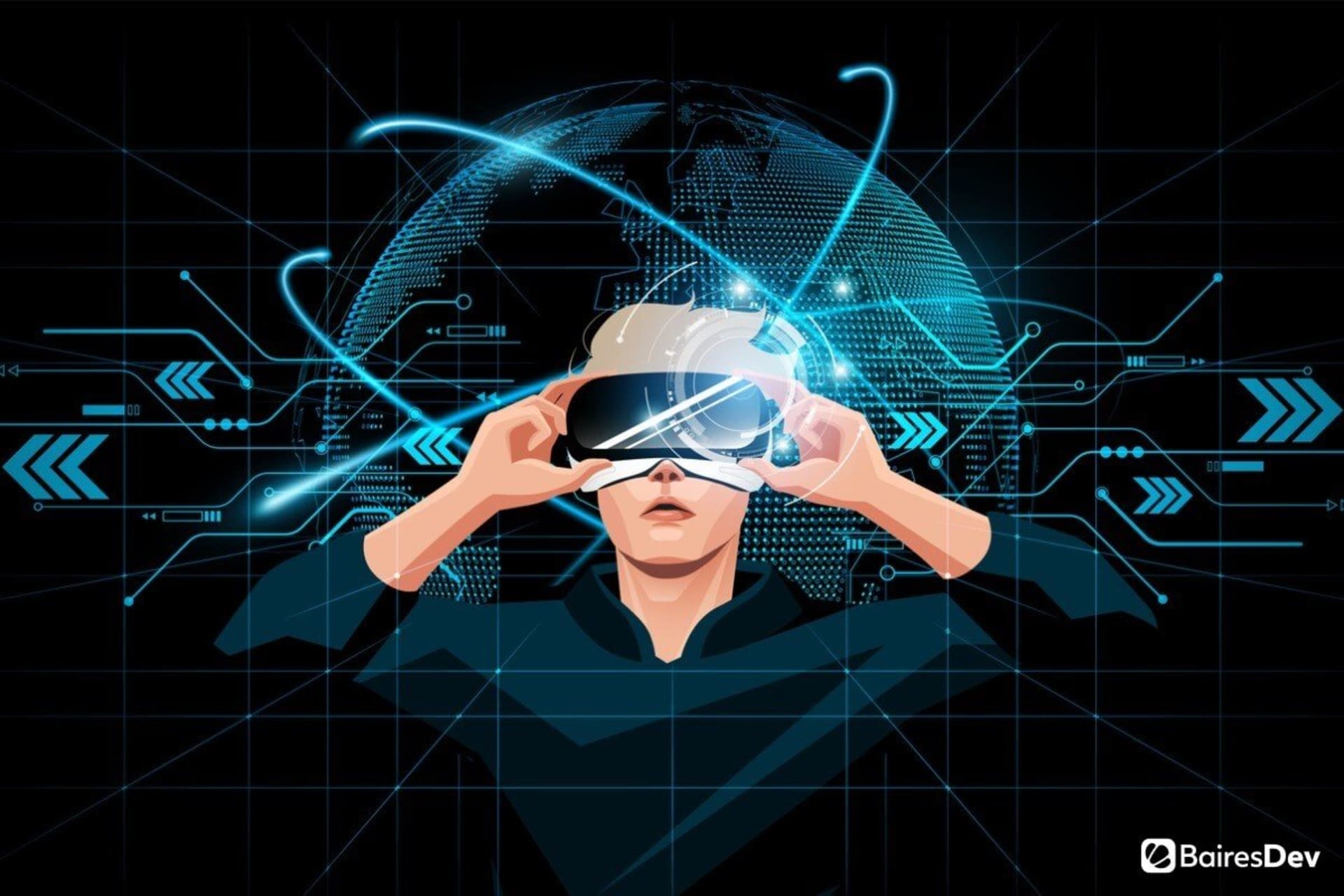Some form of the metaverse, a computer-generated virtual world, has been in the minds of everyone from science fiction writers to tech titans for several years. It seems a virtual reality of sorts is perennially “just around the corner.” However, for the first time, serious VR hardware has reached a price point and distribution scale available to most consumers.
Perhaps you found an Oculus waiting for you under the Christmas tree or purchased one for someone else. For the price of an airplane ticket, you can now buy a ticket of sorts into the metaverse.
The Ultimate Tool for Work?
One promise of the metaverse is that it represents a compelling new way to collaborate and get work done. We’ve seen iterations of virtual meetings before, and the metaverse promises to take this experience to another level.
Not only is the “talking head” effect of current video conferencing replaced by lifelike avatars interacting in virtual space, but an entire world might exist where you can effectively teleport to different locations in the virtual world. Imagine interacting with clients in their virtual “office,” or visiting a job site or supplier’s facility and “walking the halls” rather than interacting on a static screen.
Similarly, immersive virtual and augmented reality tools already have shown promise in areas like product design. Teams of engineers can walk across a virtual version of a new bridge or building before the first shovel hits the ground, just as product designers can move and examine a product from multiple angles.
The metaverse promises that these tools could be integrated into a larger world. Civil engineers might create metaverse versions of actual projects and see how virtual “citizens” use the result before making the product in real life, just as companies could design virtual products and test them in the metaverse.
Several companies are attempting to use the metaverse as an additional revenue stream, with everyone from land speculators buying virtual property to architects designing and selling elaborate “homes” in the metaverse seeking various currencies that are ultimately turned into real-world revenue.
As mainstream companies like Microsoft and Facebook invest heavily in the metaverse, it’s worth an experiment or two. Your company need not equip everyone with expensive tech or spend millions on “pretend real estate,” but attempting a gathering or two in the metaverse or experimenting with the various apps and worlds in development might identify emerging opportunities that might otherwise pass you by.
The Metaverse as VR 2.0
If you’re of a certain age, you might remember similar promises about the wonders of virtual worlds in the 1990s. In watching my son try on Oculus goggles for the first time, I couldn’t help but remember seeing people with mouths agape, grasping at non-existent objects, albeit with clunkier hardware.
Then as now, the availability of “cheap” computing power was touted as the differentiator that would bring VR to the masses, and the ubiquitous PC was cited as the sign that consumers were ready for more complex and immersive tech in their homes. Obviously, these hypotheses failed to materialize, and what was once seen as “immersive” graphics now looks like a geometry experiment gone horribly wrong.
Hardware and graphics have certainly advanced since the 90s, although the current metaverse hasn’t achieved a level of detail that would make it easily confused for reality. Avatars, the representations of individuals, still range from comic book-like characters to strange legless “peg people” floating about.
Many technologies released to high hopes and offering technically-compelling features fail without a useful application that makes the adoption hassle worth the experience. Metaverse meetings might be nice, but if it takes twenty minutes to update your googles’ firmware, connect to the right applications, and move your cat so you don’t trip over him while bounding around the metaverse, the 3-second setup of a Zoom or Teams meeting will likely win out.
Companies that have invested hundreds of millions in metaverse hardware and software have a vested interest in telling the world it’s the next big thing. However, it seems the metaverse has yet to acquire the organic “buzz” of successful technologies ranging from the iPod to social media, creating a potential for the metaverse to meet the same fate as earlier VR efforts.
The Metaverse’s Darker Side
Early VR lacked the “magic bullet” that made companies like Facebook (now Meta) wildly successful: connectivity between humans and an ability to share life in real-time. This sharing ability was combined with learning algorithms that served individuals with fully customized content that kept them coming back for more. This might be benign when that content is vacation photos and wedding announcements, but social media also has a dark side that we’re only beginning to understand as a society.
Everything from conspiracy theories to suicide has been linked to social media consumption. Despite these dire consequences, it’s worth remembering that these services are delivered on a small piece of aluminum and glass, hardly the most lifelike proposition yet still surprisingly addictive.
Applying the mechanics of social media, and the unrelenting focus on “engagement” and data gathering of its users to a virtual world has troublesome potential. Just as one might immerse themselves in a “news bubble” in social media that only shares information that confirms existing biases, imagine isolated sections of the metaverse that confirm and amplify visitors’ darker nature in a 360-degree landscape that will only grow increasingly indistinguishable from the real world.
Limitations of the Metaverse
It’s also important to be cognizant of the limitations and challenges associated with the metaverse. For instance, as with many cutting-edge technologies, there are the inevitable technical issues, including connectivity problems. This can make it difficult for companies of different types to adopt this tool in the office and beyond. Moreover, the software is highly complex and time-consuming to set up. Of course, there are also security and privacy concerns, particularly those concerning data gathering and surveillance.
Tech Leaders and the Metaverse
As tech leaders, at the most basic level, we should be aware of the evolving hardware and software related to the metaverse. If we want to be seen as strategic thinkers, understanding the applications as they relate to our business today and potential applications for the future makes us a source for advice and strategy.
Perhaps even more important, we should seek to understand the ethical use of emerging technologies and the benefits and risks they pose to our organizations and society as a whole. It’s easy to assume these large-scale concerns are someone else’s problem, but elevating your profile as a leader requires more than just knowing today’s tech and how it’s implemented.
Next Steps for the Metaverse and Work
Professionals can engage with the metaverse and learn more about its implications by attending a variety of events, such as virtual conferences and meetings, as well as trying out metaverse applications and software for themselves. Because the tool will become more prevalent in the coming years, it’s important for individuals and teams to familiarize themselves with its benefits and functionalities so they can apply these principles in the workplace.






